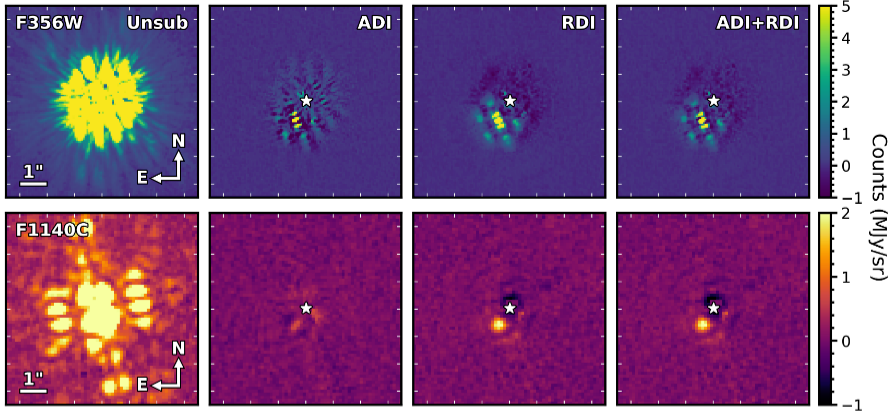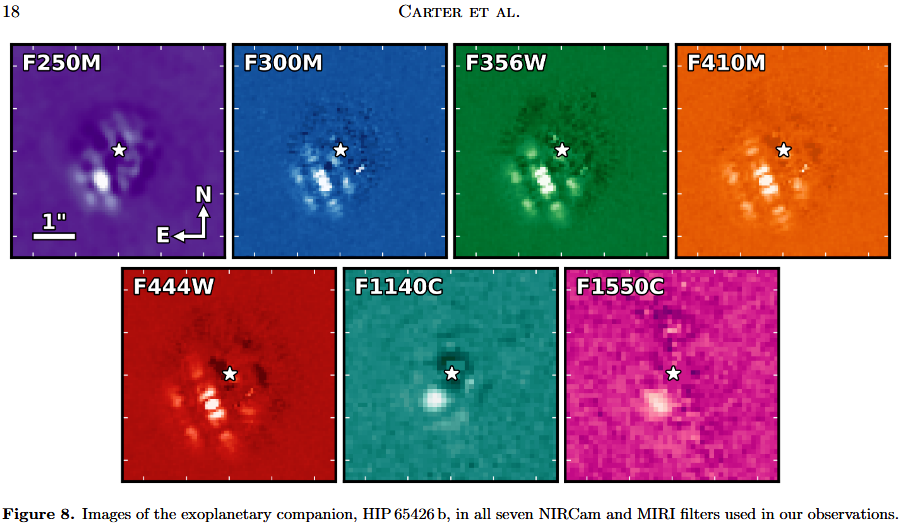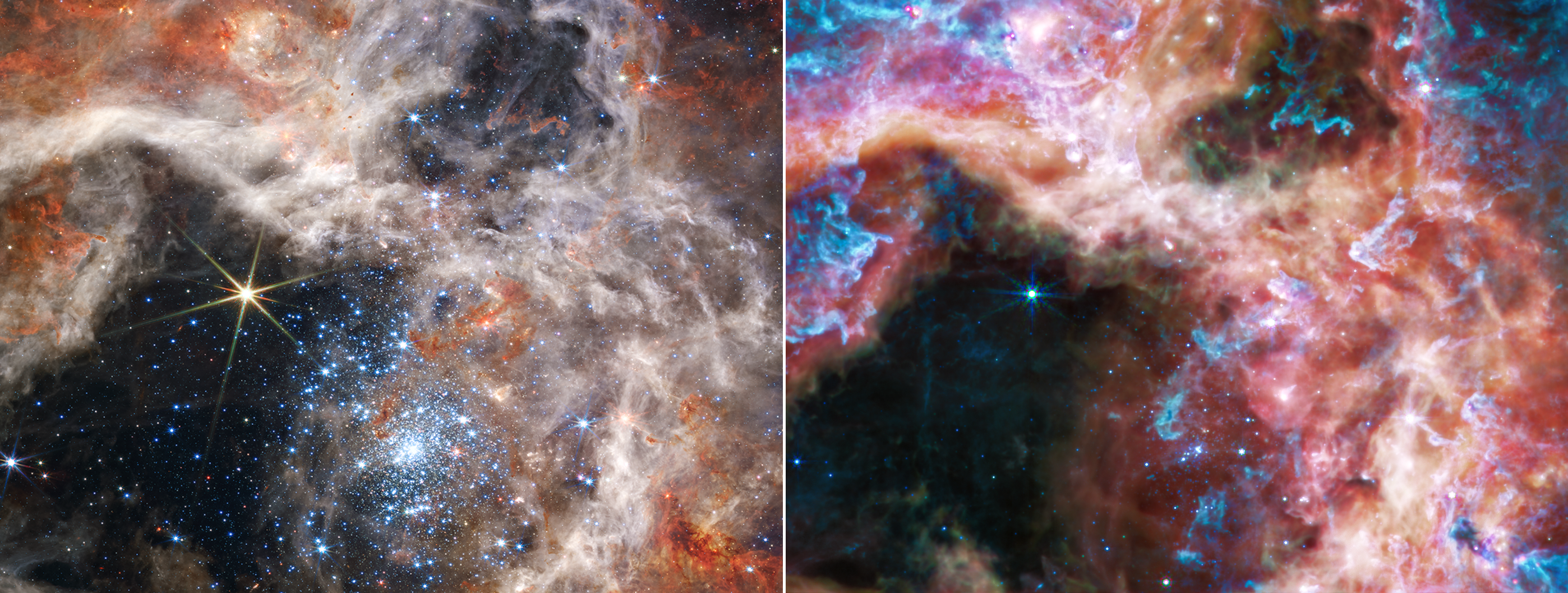mollwollfumble said:
There have also been a few exoplanet image releases.
https://webbtelescope.org/contents/media/images/01GBT1E93YV7YND5MFS1603FWJ
“Image of Exoplanet HIP 65426 b in Near and Mid Infrared”. Direct image of exoplanet in four wavelengths, star at position “∗” has been removed from each image. “It was really impressive how well the Webb coronagraphs worked to suppress the light of the host star”. “HIP 65426 b is about 100 times farther from its host star than Earth is from the Sun”. “Taking direct images of exoplanets is challenging because stars are so much brighter than planets. The HIP 65426 b planet is more than 10,000 times fainter than its host star in the near-infrared, and a few thousand times fainter in the mid-infrared.”
I had been hoping for direct imaging of exoplanets by Webb using their coronagraph. :-) IIRC, this is the first stellar coronagraph on any space telescope, up until now it has only been possible from Earth. I hope to see many more images.

https://webbtelescope.org/contents/media/images/2022/042/01GB31JJZT8NSEZQCJ8BE5EY56
The technical article for the above exoplanet JWST coronagraph is https://arxiv.org/pdf/2208.14990.pdf
The JWST Early Release Science Program for Direct Observations of Exoplanetary Systems I:
High Contrast Imaging of the Exoplanet HIP 65426 b from 2−16 μm
> We present JWST Early Release Science (ERS) coronagraphic observations of the super-Jupiter
exoplanet, HIP 65426 b, with the Near-Infrared Camera (NIRCam) from 2−5 μm, and with the Mid-
Infrared Instrument (MIRI) from 11−16 μm. At a separation of ∼0.82′′ (87 au), HIP 65426 b is
clearly detected in all seven of our observational filters, representing the first images of an exoplanet
to be obtained by JWST, and the first ever direct detection of an exoplanet beyond 5 μm. These
observations demonstrate that JWST is exceeding its nominal predicted performance by up to a factor
of 10.
> These contrast limits provide sensitivity to sub-Jupiter companions with masses as low as 0.3MJup beyond separations of ∼100 au.
> direct imaging is the most viable technique for characterising the population of exoplanets at orbital separations greater than ∼10 au
(I’d say closer than that, because the chance of a planet being in a transiting orbit is negligible even at 1 au.)
> At present ∼20 planetary mass companions (PMCs) have been detected and characterised through high con-
trast observations (Currie et al. 2022), and all exoplanets directly imaged to date have estimated or dynamically-
measured masses >2 MJup.
(Currie is https://arxiv.org/abs/2205.05696)
> brown dwarfs and exoplanets may exhibit different eccentricity distributions (Bowler et al. 2020);
(No. I’ve checked that already.)
> JWST capabilities … Saturn and Jupiter mass planets should be detectable with MIRI coronagraphy at 1−5 au separations across a sample of nearby (<10 pc) M-dwarfs … Beichman et al. (2020) predict that MIRI coronagraphy of α Centauri A may be sensitive to ∼5 R⊕
companions from 0.5−2.5 au.
(Yes! A chance of finding a planet circling Alpha Centauri by direct imaging from JWST. I look forward eagerly to them trying. Alpha Centauri contains a pair of the most sun-like stars within 20 parsecs.)
As I suspected, this exoplanet has already been seen by direct imaging, which explains how JWST knew where to look. This exoplanet was discovered in 2017.
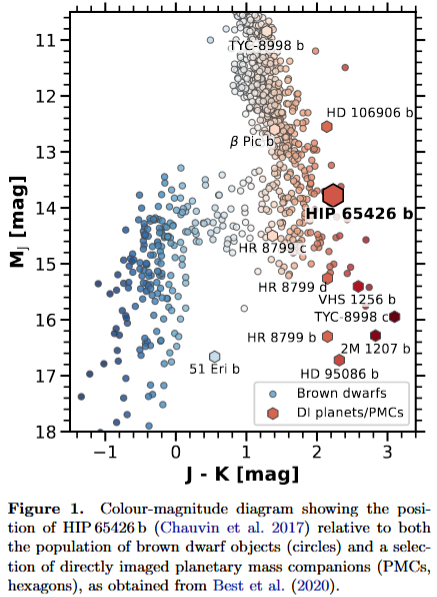
> HIP 65426 is located at a distance of 107.49 pc
An intermediate distance, not very close but close enough.
> All observations of HIP 65426 b are repeated at two independent roll angles separated
by ∼10 degrees to enable subtraction of the residual stellar point spread function (PSF)
Good.
> the poor quality of the dark current reference file, which exhibits a large number of hot pix-
els, persistence, and cosmic rays. … As the NIRCam PSF in the F250M filter is under-
sampled, ringing artifacts are generated by the interpolation methods
Naughty JWST. Repairable, but hot pixels shouldn’t have happened in the first place.
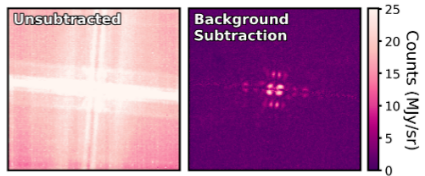
Before and after subtraction of the starlight from NIRCam (top) and MIRI (bottom).
